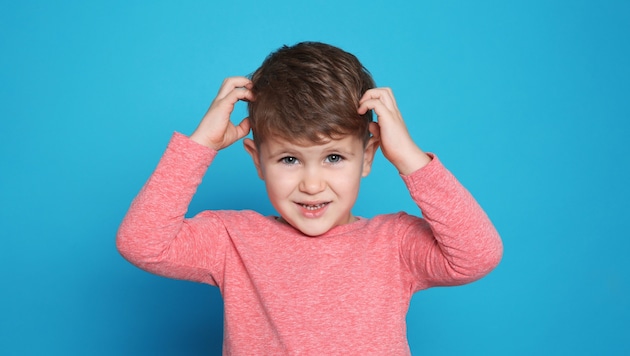Explaining lice to children
Mom, what’s crawling on my head?
If your head has been itching for a few days, you may have lice. These are very small animals that simply make themselves at home on your head. Read on to find out how they manage to do this unnoticed and what you and your parents can do to prevent them.
These little creepy-crawlies love to be cozy and warm and therefore love the human head of hair. They can make themselves really comfortable there and lay their eggs. They also like adventures and like to move from head to head. This works particularly well with small children because they often "put their heads together" when playing in kindergarten or at school and their hair touches.
Then some of the clever little creatures crawl over to your friend quickly and unnoticed. Fortunately, they cannot jump or fly. If necessary, they can take a small detour via your clothes to reach their destination - your head.
A little bloodsucker
Once they have arrived and made themselves comfortable, they quickly become hungry: With its proboscis, the six-legged louse, which is about three millimeters in size, then pricks the scalp of "its" human about every two to three hours and sucks blood. It has to do this, otherwise it dies within 24 hours.
Normally, however, you won't notice anything of this feeding. However, it does inject a small amount of saliva into the scalp during its meal, which can cause itching on the head, but doesn't have to. Scratching sometimes causes tiny wounds that can become infected.
Up to 300 offspring in one month
A head louse lives for around 30 days. A female, or "Mrs. Louse", lays around 150 to 300 eggs during this time. She often sticks them to the hair in the temple and neck area and behind the ears - where the temperature is best for development.
After six to ten days, a nymph, i.e. a young louse, hatches from such a nit. You could call it a lice baby. After three weeks, these larvae are considered "adults" and lay eggs themselves. This means that there can be a lot of lice on a head in a very short time.
Washing and combing
If the head is itchy and small crawlers are visible, your parents will use a (metal) lice comb with very narrow teeth. They will then comb your hair strand by strand from the scalp to the ends. There are also products available from the pharmacy that can be used for this purpose.
Your parents should wash bed linen, clothes, towels and other textiles at 60 degrees to be on the safe side. "Lice-infested" hoods, cuddly toys, etc., which should not be washed so warmly, can be "starved" in a tightly closed plastic bag for at least 14 days.













Kommentare
Willkommen in unserer Community! Eingehende Beiträge werden geprüft und anschließend veröffentlicht. Bitte achten Sie auf Einhaltung unserer Netiquette und AGB. Für ausführliche Diskussionen steht Ihnen ebenso das krone.at-Forum zur Verfügung. Hier können Sie das Community-Team via unserer Melde- und Abhilfestelle kontaktieren.
User-Beiträge geben nicht notwendigerweise die Meinung des Betreibers/der Redaktion bzw. von Krone Multimedia (KMM) wieder. In diesem Sinne distanziert sich die Redaktion/der Betreiber von den Inhalten in diesem Diskussionsforum. KMM behält sich insbesondere vor, gegen geltendes Recht verstoßende, den guten Sitten oder der Netiquette widersprechende bzw. dem Ansehen von KMM zuwiderlaufende Beiträge zu löschen, diesbezüglichen Schadenersatz gegenüber dem betreffenden User geltend zu machen, die Nutzer-Daten zu Zwecken der Rechtsverfolgung zu verwenden und strafrechtlich relevante Beiträge zur Anzeige zu bringen (siehe auch AGB). Hier können Sie das Community-Team via unserer Melde- und Abhilfestelle kontaktieren.